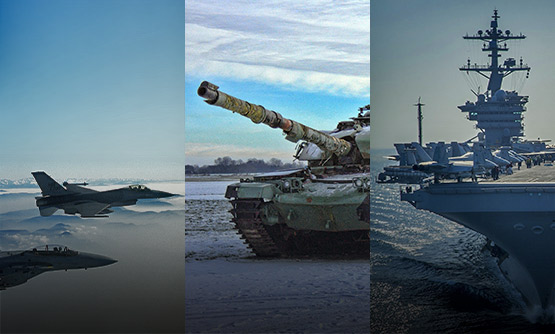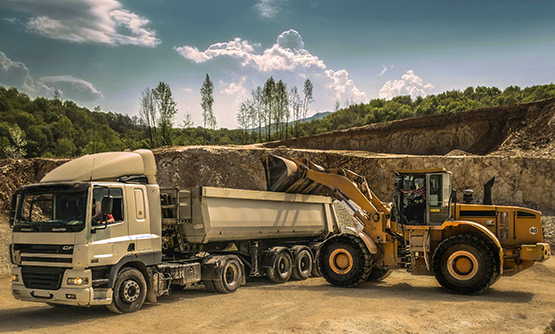The Indian military is the fourth largest in the world. After Russia, the US and China, India has emerged as a military powerhouse in just six decades. In the Indian army, we have a well-trained and disciplined army contingent and is equipped with modern ammunition. In Indian air force on the other hand, we have modern fighter jets that are capable of displaying its prowess during times of emergency. The Indian navy is also growing steadily with increased acquisition of submarines and aircraft carriers.
Latest defense technology: Air, land, and water

It was difficult to imagine that India would rise as a military powerhouse in 67 years after independence. The expansion and modernization of India’s military power, as well as the development of nuclear technology, has happened in several phases. Indian’s defense enhancement and preparedness have received several boosts in recent months. Let’s take a look at the different significant developments that have added to India’s combat abilities.
Air
1. Akash Weapon System: The indigenous Akash Weapon System (AWS) was inducted by the Indian army recently. The AWS is equipped with an indigenous surface to air supersonic missiles and is designed to be an ‘air defense system’ and ‘weapon locating radar’. It is capable of locating and detecting aerial threats up to a distance of nearly 25 km. According to DRDO, Akash is a multi-target, multi-directional and also an all- weather air-defense system. The Akash weapon system consists of control centers, tracking radars, and ground support systems that are fixed atop high mobility vehicles. The AWS is designed in such a way that it can be integrated with other air defense command and networks through secured communication links.
2. Mirage-2000 Fighter Aircraft: This aircraft is reportedly the upgraded version of Mirage-2000. This version improves the overall performance of the aircraft with advanced weapons, self-protection suite, and avionics. The upgrades include night-vision goggle-compatible glass cockpit, advanced Identification Friend or Foe (IFF) system, advanced navigational system, advanced multi-mode multi-layered radar, integrated electronic warfare suite and many more.
Land
1. Upscaling of BRAHMOS missile: This powerful weapon system is known for its outstanding speed, precision, and deadly power. BRAHMOS, which is a land-based complex weapon system consists of 4-6 Mobile Autonomous Launchers (MAL) which are controlled by Mobile Command Post (MCP) and Mobile Replenishment Vehicle (MRV). MAL is an autonomous vehicle and is equipped with its power supply, fire control system and communication. It is installed with three BRAHMOS missiles that are placed in three independent containers. It can be fired simultaneously on three different targets or in several other required combinations as per the need. The land-based system is also fitted with the Inertial Navigation System and Global Positioning System. The recent upscaling of the BRAHMOS missile is spearheaded to bolster India’s defense arsenal.
2. Anti-tank Spike missiles: army has placed an order for procuring Israeli anti-tank Spike missiles. This was initiated after the Pulwama attack on February 14 wherein 40 CRPF personnel were killed. These missiles are known for their precision targeting with a capability to pierce even bunkers. These can be deployed both in mountains and plains and can hit targets at a range of four kilometers. They can be fired from various platforms like vehicles, helicopters, ships and even ground launchers. It can also be deployed along the Line of Control (LoC)
3. Agni-V Missile: Agni-V is India’s most potent missile and its maiden canister-based trial was conducted in January. The strike range of Agni V is over 5000 km and can carry a nuclear warhead of over one tonne. Ships located in midrange were able to track the vehicle while the maiden missile trail was being carried out. The missile was launched from a hermetically sealed canister and the steel container was made of maraging steel.
Water
1. INS Sardar Patel: In the year 2015, INS Sardar Patel was commissioned in Gujarat's Porbandar by the Indian Navy. The commissioning of INS Sardar Patel in Gujarat would improve its synergy with other maritime agencies and will also enable it to improve its infrastructure and efficiency in Gujarat. The Forward Operating Base (FOB) of the Indian Navy in Gujarat, as well as the Headquarters of the Naval Officer-in-charge located in Daman & Diu, will also enhance the logistic support which is being extended to the Indian navy units present in the Northern Arabian Sea. This also includes the International Maritime Boundary line with Pakistan.
2. INS Visakhapatnam: The Indian navy’s stealth destroyer INS Visakhapatnam was launched in Mumbai’s Mazagon deck in April. INS Visakhapatnam is the first of its kind P15-B stealth destroyer. It is designed to achieve a speed of over 30 knots at a displacement of about 7300 tons. The ship which is 163 m long is propelled by four gas turbines. According to the Defense Ministry, the indigenously designed stealth destroyer has sensors, state-of-the-art weapons, integrated Platform Management System, an advance Action Information System, a sophisticated power information system as well as other advanced features. It is fitted with a surface-to-surface missile system. The integrated system enables the ship to coordinate long-range shore-based and naval-based targets making it lethal enough to strike down enemies.
3. Kalvari: Scorpene-class stealth submarine: Kalvari is the Indian Navy’s first of its kind stealth submarines which are being built under Project 75. The P75I project is a part of a 30-year submarine building plan that is slated to end in 2030. It has already been delayed by 40 months and is now back on track after Kalvari was undocked at the Mazagon Dock Ltd. The Scorpene submarines would be fitted with anti-ship missiles as well as long-range guided torpedoes fitted with modern sensor suites.
So far, the recent defense technologies deployed by our country seems to be good enough to prepare India during times of emergencies! Since 2018 alone, India has made 11 new technology deals. This is a sure sign of the enhancement of the Indian armed forces and more defense projects are in the pipeline. One major concern faced by our country is that this will not benefit India in the long run, unless we make our own technology.













